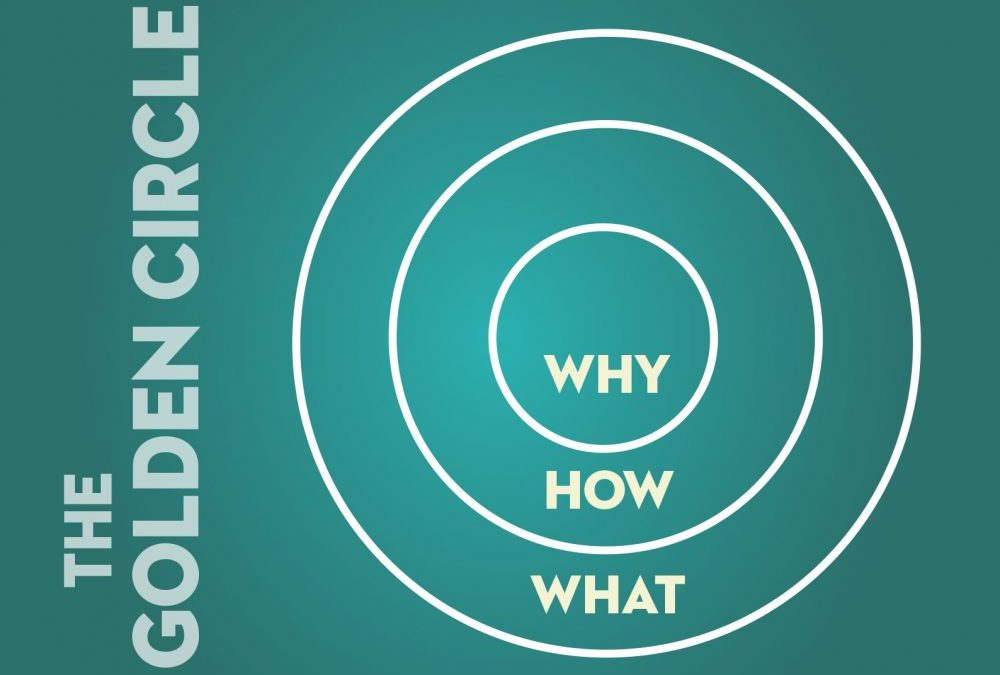Applying the Golden Circle to Content Marketing Strategy
“People don’t buy what you do, they buy why you do it.” – Simon Sinek, author, speaker, and consultant
At a recent Knoxville American Marketing Association meeting I was reminded of Simon Sinek’s Golden Circle concept on how great leaders inspire action. In short, his message is this: “Every organization on the planet knows WHAT they do and HOW they do it, but very few organizations know WHY they do what they do. What’s your purpose, your cause, why should anyone care? Always build your story from the inside out, starting with the WHY.”
As B2B marketers with content always on the brain, it’s a reminder that the success of the content we produce hinges on the WHY. It’s the key to effective storytelling, and as a result, it’s what ultimately leads to a successful business transaction. It’s easy to fall into the habit of defining services and products, but not truly getting to the heart of the matter.
As Simon says: the answer to the why is NOT to make money. The why is not to be on the Fortune 500 list.
Here’s the example he gives for traditional marketing versus WHY marketing. I could paraphrase this, but I probably wouldn’t do his words justice:
“If Apple were like everyone else, a marketing message from them may sound like this: We make great computers. They are beautifully designed, simple to use, and user friendly. Want to buy one?
Here’s how Apple actually communicates – Everything we do, we believe in challenging the status quo, we believe in thinking differently. The way we challenge the status quo is by making our products beautifully designed, simple to use, and user friendly. We just happen to make great computers. Want to buy one?”
What a beautiful illustration of marketing that moves, that inspires, that calls us to action. What a wake up call to take a look at our content and messaging to ensure it all traces back to the root of why our company does what it does.
Here are a couple ways you (and I) can check to see if your company’s content marketing is from the “inside out:”
1. Do you have passion and buy-in from the employees, your subject matter experts?
If employees are passionate about the brand and have a clear vision of the WHY, it will exude from them and it will most definitely show up in their writing (or in a podcast or speaking event, for that matter). When calling on an employee to contribute a white paper, blog, article, you name it – is it a bland piece just describing a process or does it work to solve a problem for your customer?
Key takeaway: If you’re unsure whether your staff knows the WHY of your company, do a brief internal survey. The results may come back to tell you it’s time to reinvigorate the company manifesto.
2. How’s your customer engagement?
How are customers responding to your content? It’s in the data. Look into how long a visitor stays on your blog page, and how frequently visitors are returning before they actually make a purchase or contact you. These stats will give you insight into what’s working. If a piece of content doesn’t have the online interaction you’re looking for, perhaps run it through the ‘WHY’ lens to see if it’s hitting the mark.
Key takeaway: As marketers, sometimes we’re just too close to the content to gauge whether it’s communicating from the inside out. If so, hand the website copy or that piece of collateral to a couple of industry colleagues not associated with your company, and ask them what they see. Ask them to be honest, brutally so, if necessary.
Here’s one last quote from Simon to mull over: “Communicating from the outside in doesn’t drive behavior.” Analyze your content marketing outputs and ask yourself, does it answer the one simple question of WHY? If you can’t answer “yes,” maybe it’s time for a reset. And if you need further inspiration, I encourage you to carve a bit of time out of your day to watch Simon’s 2009 Ted Talk – it’s all the inspiration you’ll need.
For more on content marketing, check out my colleague Rachel DeFrank’s blog post on Four Tricks for Your Content Marketing Strategy.

